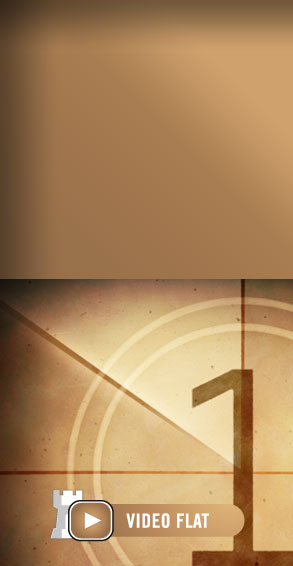Refuting the Grand Prix attack
By IM Andrew Martin

[Event "?"] [Site "?"] [Date "2012.11.12"] [Round "?"] [White "GP Attack Intro"] [Black "?"] [Result "*"] [ECO "B23"] [Annotator "Martin,Andrew"] [PlyCount "13"] [EventDate "2012.11.12"] [SourceDate "2012.11.12"] 1. e4 c5 2. Nc3 d6 3. f4 {The Grand Prix Attack or McDonnell Attack: the latter name stems from the 14th match game played in London in 1834 between Alexander McDonnell and Charles Louis Mahé de La Bourdonnais, won by Black.} g6 4. Nf3 Bg7 5. Bc4 Nc6 {[#] Over the years, the name of the Grand Prix attack has widened to include variations where White plays with both Bc4 and Bb5. In fact , it is nothing of the sort. The opening got its name thanks almost exclusively due to FM David Rumens, who used the Grand Prix, the Stonewall Dutch and other idiosyncratic weapons to win the English-based Cutty Sark Grand Prix on a regular basis, back in the 1970's and 80's. Rumens upon reaching this position or those like it, used to try to crash through with f4-f5, whether sacrificing a pawn or not and that is the true GP attack. All others are a pale imitation.} 6. O-O e6 7. f5 *

[Event "Bizovac Metalis op 07th"] [Site "Bizovac"] [Date "2000.02.24"] [Round "2"] [White "Biti, Ozren"] [Black "Sulc, Damir"] [Result "1-0"] [ECO "B23"] [WhiteElo "2269"] [BlackElo "2283"] [Annotator "Martin,Andrew"] [PlyCount "33"] [EventDate "2000.02.24"] [EventType "swiss"] [EventRounds "7"] [EventCountry "CRO"] [Source "ChessBase"] [SourceDate "2000.11.22"] {Hordes of unsuspecting opponents were queueing up to be battered in the following manner} 1. e4 c5 2. Nc3 Nc6 3. f4 d6 4. Nf3 g6 5. Bc4 Bg7 6. O-O e6 7. d3 Nge7 8. Qe1 O-O 9. f5 exf5 10. Qh4 Qd7 11. Bh6 Ne5 12. Ng5 {[#] This is the basic attacking position. Black can kiss the game goodbye.} Nxc4 (12... Bf6 13. Bxf8 Bxg5 14. Qxg5 Kxf8 15. exf5 Nxf5 16. Nd5 $18) 13. Bxg7 Kxg7 14. Qxh7+ Kf6 15. e5+ Kxg5 16. h4+ Kg4 17. Qh6 {The thought of launching an attack in this manner, without the need for too much prior preparation, makes the opening as popular among club players today as it was back then.} 1-0

[Event "USA-chT"] [Site "New York"] [Date "1969.??.??"] [Round "?"] [White "Saidy, Anthony Fred"] [Black "Fischer, Robert James"] [Result "0-1"] [ECO "A25"] [Annotator "Martin,Andrew"] [PlyCount "71"] [EventDate "1969.??.??"] [EventType "game"] [EventRounds "1"] [EventCountry "USA"] [Source "ChessBase"] [SourceDate "1999.07.01"] {From where did Rumens get his ideas? I am guessing that the following influential game might have had something to do with it.} 1. c4 e5 2. Nc3 Nc6 3. g3 f5 4. Bg2 Nf6 5. e3 Bc5 6. d3 f4 {[#] There was no Grand Prix in Fischer's day.} 7. exf4 O-O 8. Nge2 Qe8 9. O-O d6 10. Na4 Bd4 11. Nxd4 exd4 12. h3 h5 13. a3 a5 14. b3 Qg6 15. Nb2 Bf5 16. Qc2 Nd7 17. Re1 Nc5 18. Bf1 Ra6 19. Bd2 Rb6 20. Bxa5 Rxb3 21. Bd2 Ra8 22. a4 Ra6 23. a5 Kh7 24. Red1 b6 25. Be1 bxa5 26. Na4 Rxd3 27. Bxd3 Bxd3 28. Qa2 Nb4 29. Qa3 Nc2 30. Qb2 Nxa1 31. Rxa1 Nxa4 32. Rxa4 Qe4 33. Bxa5 Rxa5 34. Rxa5 Qe1+ 35. Kh2 Qxa5 36. Qxd4 {Imagine, if Black can win with the same attacking scheme, how much more deadly would it be with an extra move?} 0-1

[Event "BCF-ch"] [Site "Morecambe"] [Date "1981.08.03"] [Round "1"] [White "Rumens, David E"] [Black "Jackson, Oliver"] [Result "1-0"] [ECO "B23"] [WhiteElo "2355"] [BlackElo "2225"] [Annotator "Martin,Andrew"] [PlyCount "77"] [EventDate "1981.08.03"] [EventType "swiss"] [EventRounds "11"] [EventCountry "ENG"] [Source "ChessBase"] [SourceDate "1998.11.10"] {Very few of the games of David Rumens are preserved from this period, mostly because he was playing in weekend congresses and he did his utmost to destroy the scoresheets, so that his secrets would have some sort of shelf-life. I present two of his skirmishes from this period} 1. e4 c5 2. Nc3 e6 3. f4 Nc6 4. Nf3 g6 5. f5 Bg7 6. Bc4 Nge7 7. fxe6 fxe6 8. O-O O-O 9. d3 d5 10. Bb3 b5 11. Nxb5 Qb6 12. Ba4 c4+ 13. Kh1 cxd3 14. cxd3 Ba6 15. exd5 Nxd5 16. Na3 Rad8 17. Nc4 Bxc4 18. dxc4 Nc3 19. Qb3 Nxa4 20. Qxa4 Ne5 21. Bg5 Rb8 22. Nxe5 Bxe5 23. Bh6 Rf5 24. Rxf5 exf5 25. Re1 Qf2 26. Qd1 Qxb2 27. Qd5+ Kh8 28. Bc1 Qd4 29. Qxe5+ Qxe5 30. Rxe5 Rb1 31. Re1 Rb4 32. Bh6 Kg8 33. Rc1 Kf7 34. c5 Ke7 35. c6 Kd8 36. g3 Rb2 37. Bf4 Rxa2 38. c7+ Kc8 39. Rb1 1-0

[Event "Lloyds Bank op 05th"] [Site "London"] [Date "1981.08.26"] [Round "2"] [White "Rumens, David E"] [Black "Ginsburg, Mark"] [Result "1-0"] [ECO "B21"] [WhiteElo "2355"] [BlackElo "2335"] [Annotator "Martin,Andrew"] [PlyCount "39"] [EventDate "1981.08.??"] [EventType "swiss"] [EventRounds "9"] [EventCountry "ENG"] [Source "ChessBase"] [SourceDate "1999.11.16"] 1. e4 c5 2. f4 g6 3. Bc4 Bg7 4. Nf3 Nc6 5. O-O d6 6. Qe1 a6 7. d3 Nf6 8. Nc3 Nd4 9. Bb3 e6 10. f5 {[#] A true Grand Prix attack.} Qe7 11. fxe6 Bxe6 12. Nxd4 cxd4 13. Ne2 Nd7 14. Qf2 Ne5 15. Nxd4 Ng4 16. Nxe6 Nxf2 17. Nxg7+ Kd7 18. Rxf2 Raf8 19. Bd2 Kc8 20. Raf1 {Obliteration.} 1-0
All this brings us to the present day and a video I have produced, which possibly renders the Grand Prix attack, at least with an early f4-f5 sacrifice, harmless. White will have to find a way of delaying f4-f5 to a better moment. 1. e4 c5 2. Nc3 d6 3. f4 g6 4. Nf3 Bg7 5. Bc4 Nc6 6. O-O e6 7. f5 exf5 8. d3 Nge7 9. Qe1 h6!
Andrew David Martin (born 18th May 1957 in West Ham, London) is an English chess player with the title of International Master. He has won various national and international tournaments and has been playing for years in the Four Nations Chess League, at present (July 2009) for Wood Green Hilsmark Kingfisher, previously for the Camberley Chess Club. Martin received his IM title in1984. He earned his first grandmaster norm in the British Championship of 1997 in Brighton. Martin was a commentator on the chess world championship between Kasparov and Kramnik in 2000.

On the 21st February 2004 Martin set a new world record for simultaneous chess. He faced 321 chess players at the same time. His result was: 294 wins, 26 draws and only one loss. Martin is known as a professional chess teacher and head trainer of the English youth team. He trains eight schools (Yateley Manor, Aldro, Millfield, Sunningdale, Waverley School, St Michael’s Sandhurst, Wellington College, Salesian College). Martin is a chess columnist, an author of chess books and the author of various instructional videos. He was the publisher of the series Trends Publications. Martin lives in Sandhurst, England, is married and the father of two daughters and two sons. His present Elo rating is 2423 (as of July 2009).

Andrew Martin training DVDs you can find here in the ChessBase Shop
























